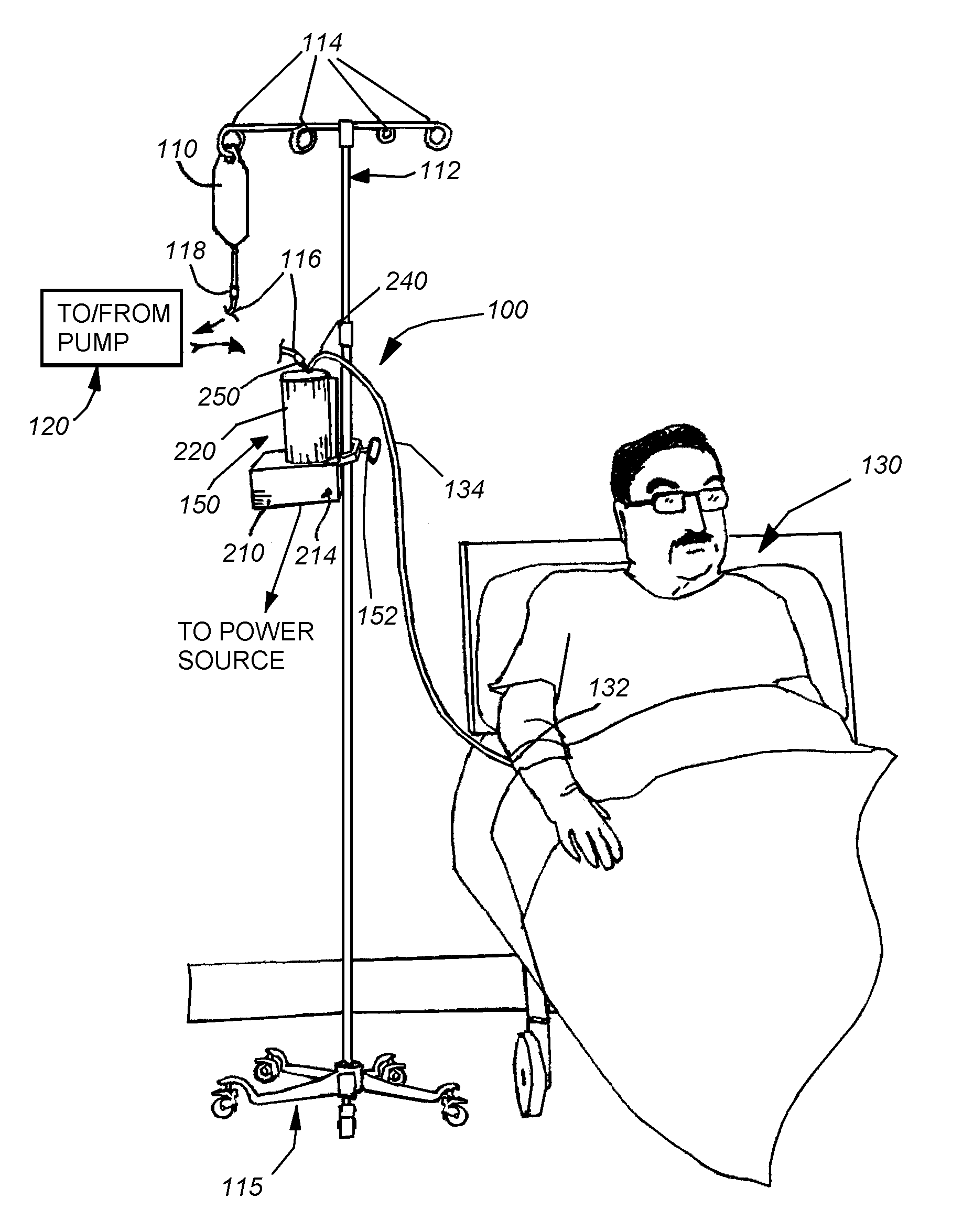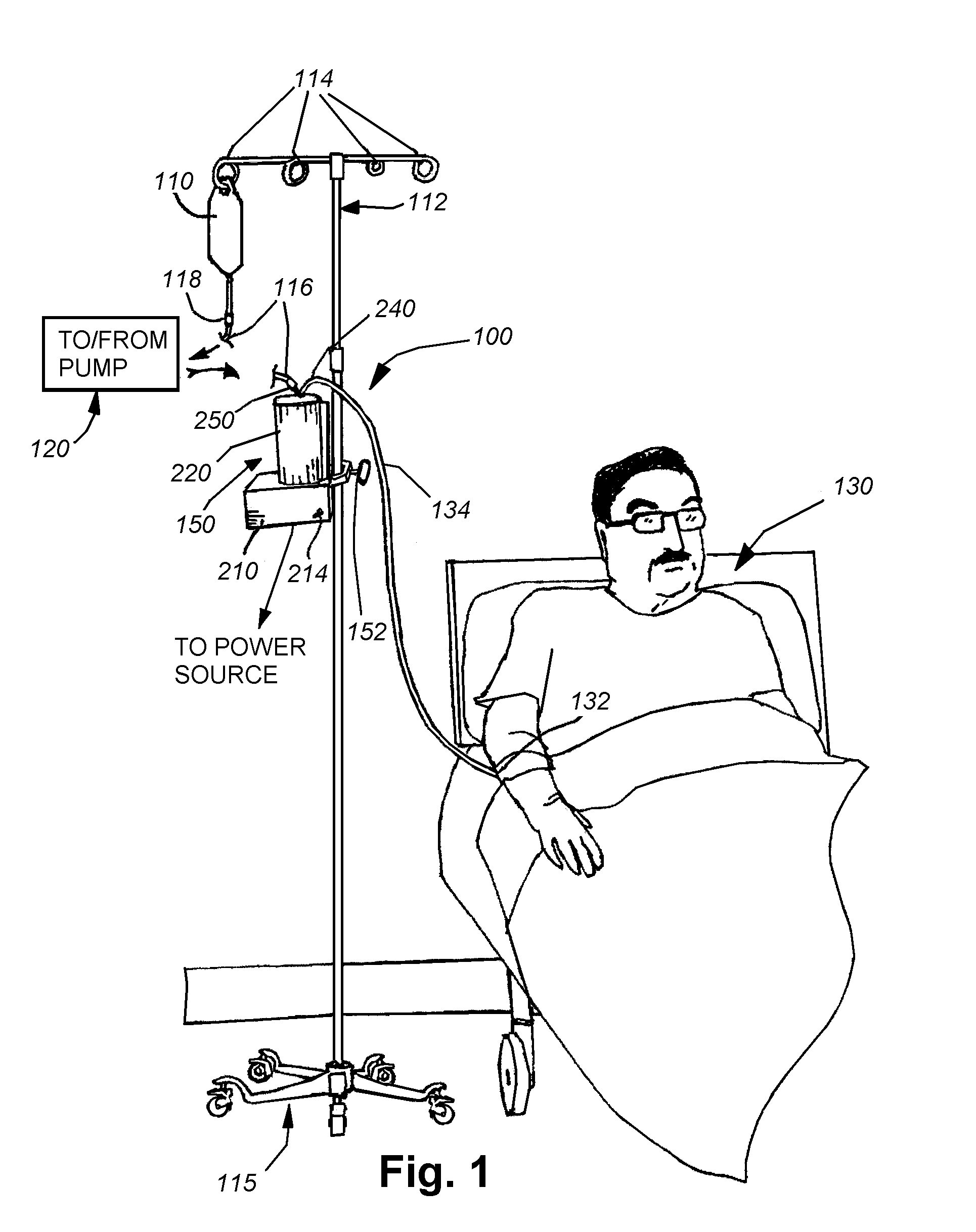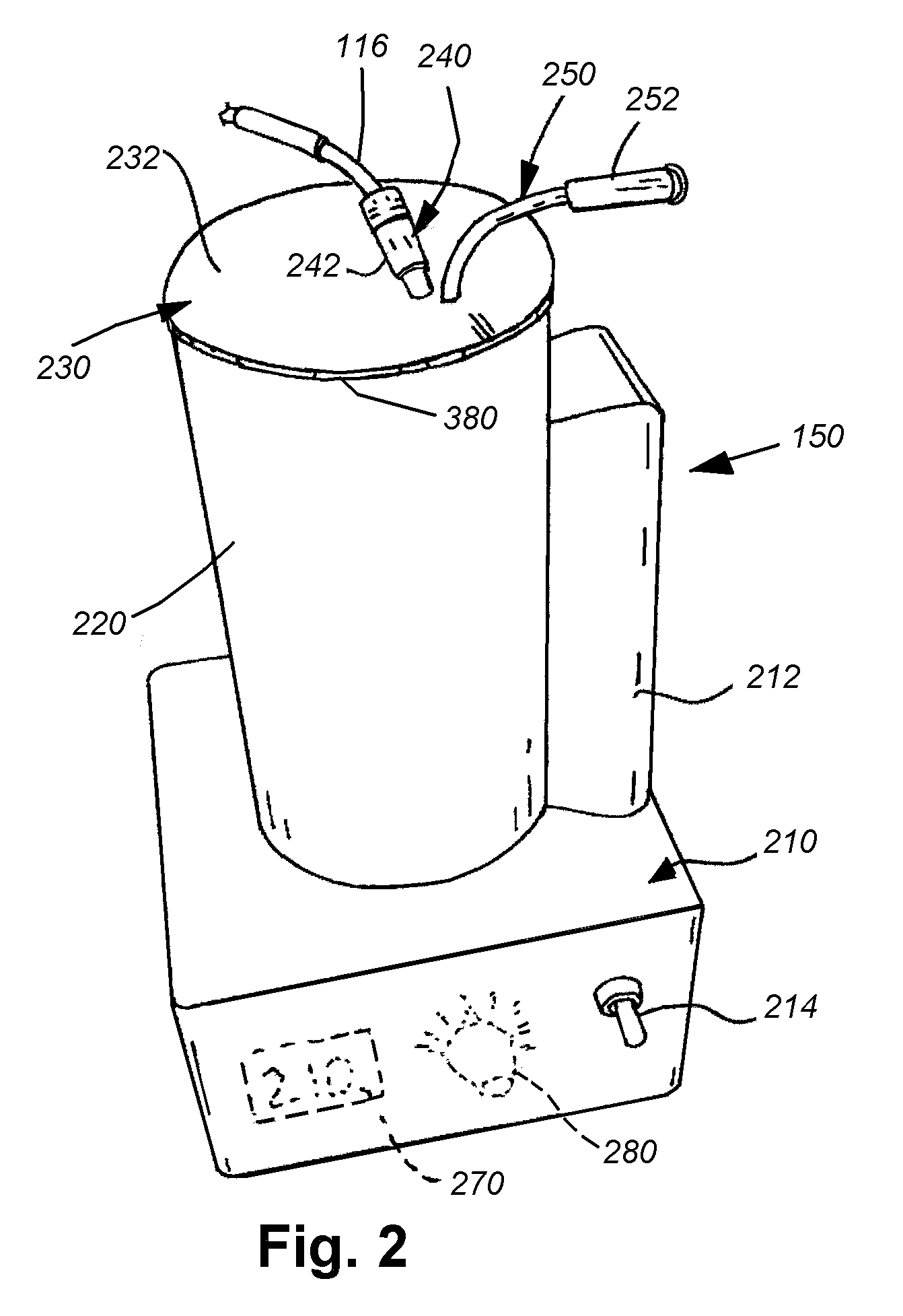Inline intravenous fluid sterilizer
a fluid sterilizer and intravenous technology, applied in the direction of disinfection, material analysis using wave/particle radiation, treatment water, etc., can solve the problems of affecting the quality and cost of healthcare globally, the overall cost to this country can exceed 2 billion dollars annually, and the opportunity for a sterility breach, etc., to achieve sufficient flow rate, prevent the formation of bubbles during use, and large surface area
- Summary
- Abstract
- Description
- Claims
- Application Information
AI Technical Summary
Benefits of technology
Problems solved by technology
Method used
Image
Examples
Embodiment Construction
[0034]As shown in FIG. 1, an exemplary arrangement of an intravenous (IV) fluid delivery system 100. The system 100 typically includes a source, such as a conventional IV fluid bag 110, containing an appropriate therapeutic agent in fluid solution. In further embodiments, a combination of fluids, with appropriate mixers and / or stopcock systems can be provided. The bag is mounted on an IV stand or pole 112 including a plurality of associated hanging hooks 114 that are adapted to suspend bags for effective gravity feed of the fluid through a tubing system. The stand can be fixed or portable, as provided by the caster base 115. The bag 110 is adapted to be replaced with a new full bag as needed by manipulating a conventional Luer Lock interconnection 118 and / or a spike interconnection that engages the bag 110. A proximal tubing section 116 is interconnected to the bag via the fitting 118. While not shown, a variety of other fittings can be employed along the tubing 116, including stopc...
PUM
| Property | Measurement | Unit |
|---|---|---|
| pore size | aaaaa | aaaaa |
| length | aaaaa | aaaaa |
| wavelength | aaaaa | aaaaa |
Abstract
Description
Claims
Application Information
 Login to View More
Login to View More - R&D
- Intellectual Property
- Life Sciences
- Materials
- Tech Scout
- Unparalleled Data Quality
- Higher Quality Content
- 60% Fewer Hallucinations
Browse by: Latest US Patents, China's latest patents, Technical Efficacy Thesaurus, Application Domain, Technology Topic, Popular Technical Reports.
© 2025 PatSnap. All rights reserved.Legal|Privacy policy|Modern Slavery Act Transparency Statement|Sitemap|About US| Contact US: help@patsnap.com



